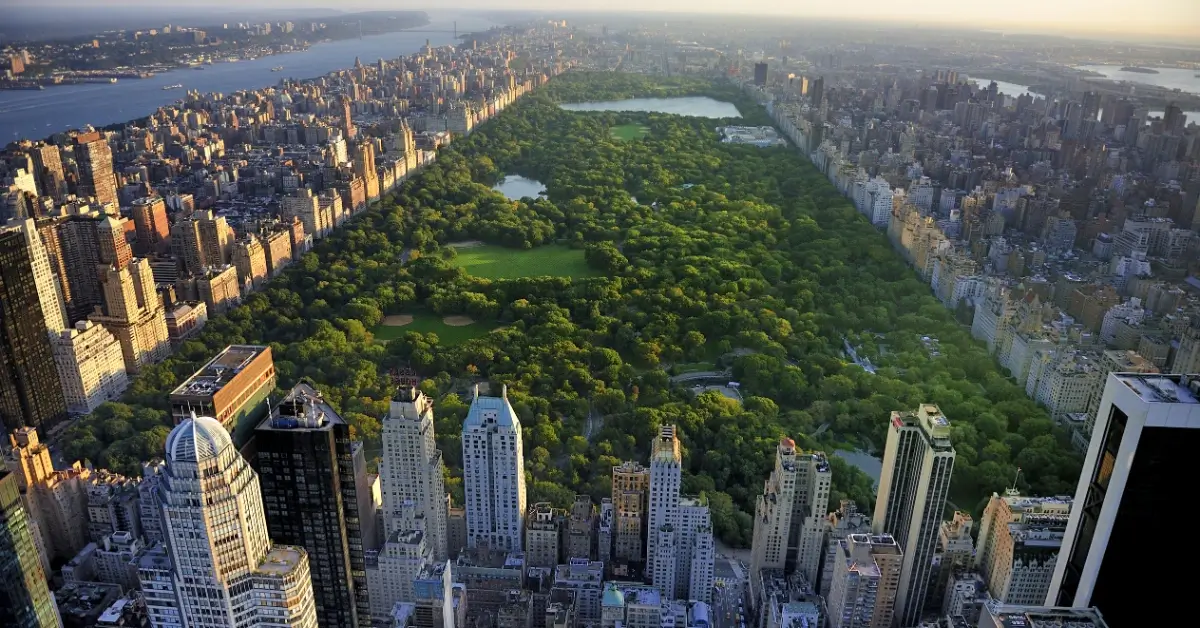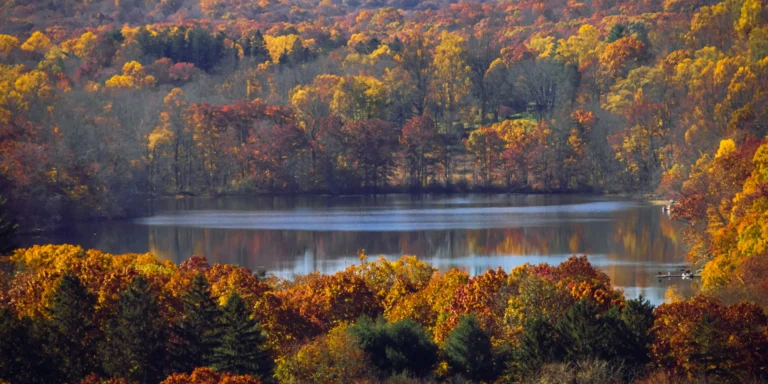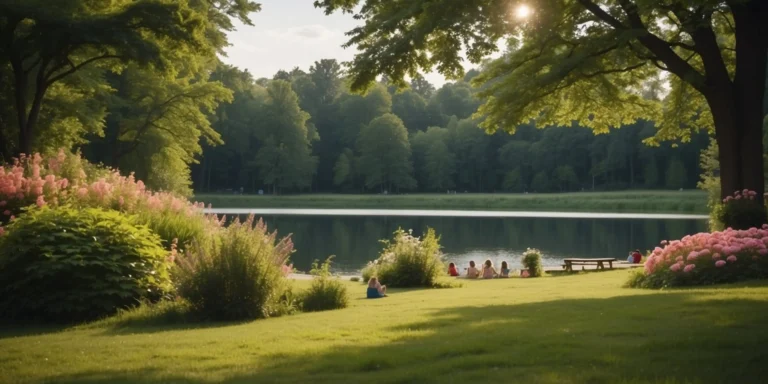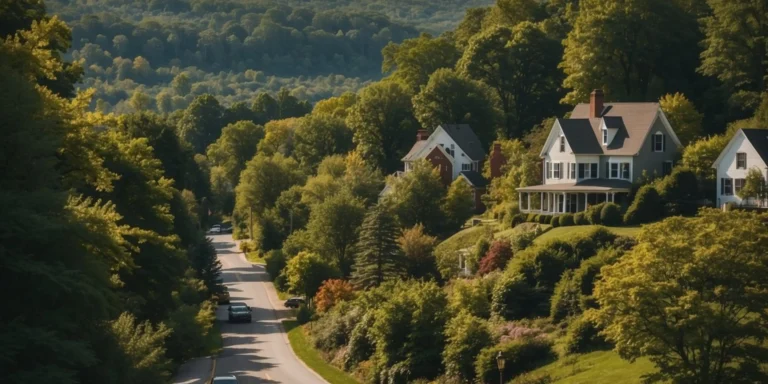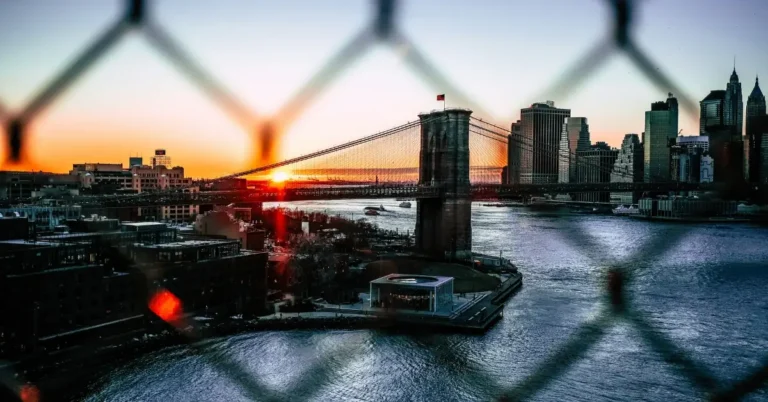As we explore Central Park New York facts, we quickly realize that this iconic park is full of interesting tidbits about its history, design, and impact on the city. Central Park is an urban oasis that has captured the hearts of locals and visitors alike, offering a unique tapestry of breathtaking landscapes, cultural events, and recreational activities.
What you may not know, however, is that Central Park is not just a beautiful patch of green in Manhattan; it has a rich history and has undergone numerous transformations since its establishment in 1858. Throughout this article, we’ll uncover fascinating information about this park’s diverse features, its origins, and how it has evolved over the years. Let’s dive into the amazing world of Central Park New York facts and discover what makes this place so special.
Landmarks and Features
We’re excited to share some fascinating Central Park New York facts with you! In this section, we’ll explore some prominent landmarks and features that make this beautiful park stand out among the rest.
Belvedere Castle
Belvedere Castle is a stunning architectural gem that offers some of the best views of Central Park. Designed in 1869 by Calvert Vaux and Jacob Wrey Mould, this historic landmark also houses the Henry Luce Nature Observatory, where visitors can explore Central Park’s wildlife and natural habitats. Additionally, the castle serves as an official weather station, measuring rainfall, temperature, and wind speed.
Strawberry Fields
A tribute to musician John Lennon, Strawberry Fields is a 2.5-acre landscape named after the famous Beatles song “Strawberry Fields Forever.” It’s located across the street from the Dakota building, where Lennon lived and was tragically killed. This serene memorial features a circular black-and-white mosaic with the word “Imagine” at its center, symbolizing peace and hope for a better world. It’s a favorite gathering spot for fans and those seeking a moment of quiet contemplation.
The Reservoir
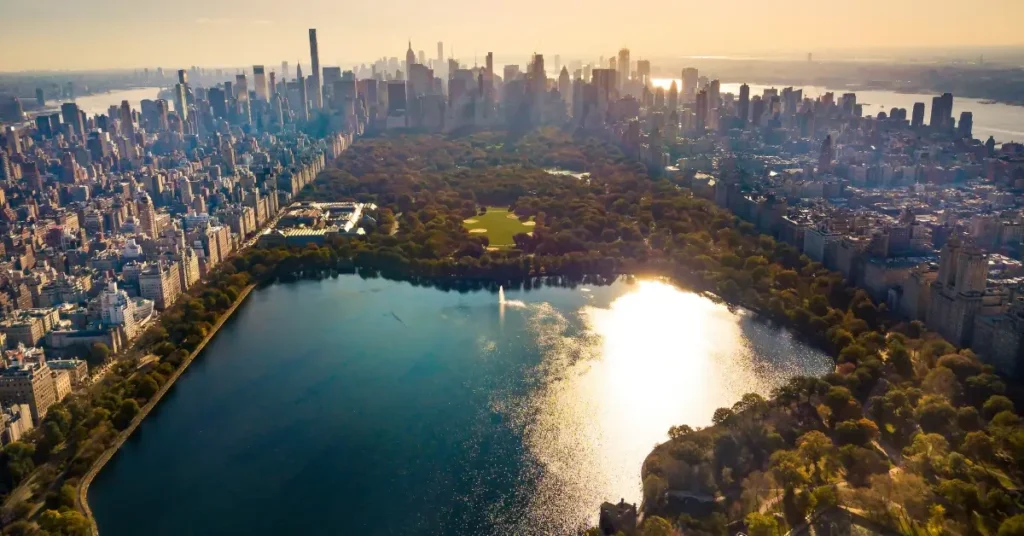
The Central Park Reservoir is an iconic body of water that covers an impressive 106 acres and holds over a billion gallons of water. Originally built as a temporary water supply for New York City, it’s now one of the park’s many beautiful features. With a 1.58-mile jogging track surrounding the reservoir, locals and tourists alike can enjoy a scenic workout while taking in panoramic views of the city skyline. The Reservoir is also home to more than 20 species of waterfowl, making it a great spot for birdwatching.
By exploring these landmarks and many other features, we hope you’ve gained a deeper appreciation for the rich history and beauty Central Park has to offer.
Recreational Activities
As we explore some central park new york facts, let’s dive into the recreational activities available in this iconic location.
Central Park Zoo
Located in the heart of Central Park, the Central Park Zoo is home to a variety of animals, from snow leopards to sea lions. Visitors can take a guided tour or explore the exhibits at their own pace. The zoo also offers educational programs and conservation initiatives for those interested in learning more about the animals and protecting their habitats.
Wollman Rink
During the winter months, Central Park’s Wollman Rink offers a picturesque setting for ice-skating. Whether you’re a seasoned skater or just starting out, the rink provides a fun and unique way to experience Central Park. When the weather warms up, the rink transforms into a venue for roller-skating, adding another fun-filled activity for park-goers to enjoy.
Cultural Influence
As we dive into central park new york facts, it’s essential to discuss the cultural influence the park has had over the years. Several aspects of popular culture have found their inspiration within Central Park. Let’s take a look at how Central Park has influenced film and literature.
Central Park in Film
Central Park’s picturesque landscapes and iconic locations have made it a popular choice for filmmakers. The park has been featured in countless movies, creating memorable scenes that have become ingrained in our minds. From romantic comedies like “When Harry Met Sally” to classic films like “Breakfast at Tiffany’s,” Central Park has served as a captivating backdrop for various stories over the decades.
Some other well-known films featuring Central Park include:
- Home Alone 2: Lost in New York: Kevin’s adventures take him to Central Park, where he befriends a pigeon lady and later uses pigeon-feeding tactics to ward off the villains.
- Enchanted: The musical comedy showcases Central Park as a magical place when Giselle sings with animals in the park.
- Ghostbusters: The supernatural comedy features a giant marshmallow man terrorizing the park.
Central Park in Literature
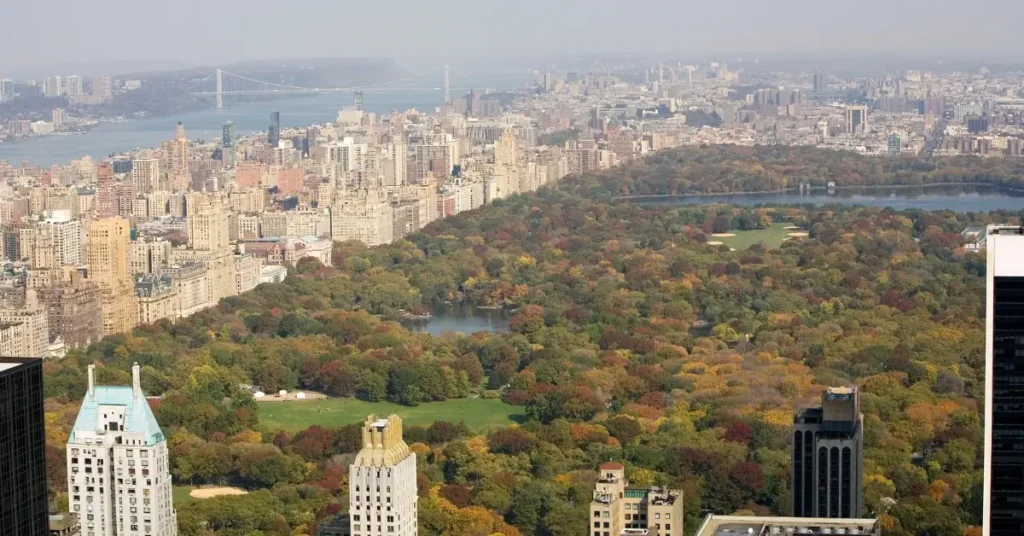
Central Park’s unique charm and enchantment have also captured the imagination of countless authors. From classic literature to modern fiction, the park serves as the setting for various literary works, often reflecting the city’s energy, diversity, and spirit.
Some notable books featuring Central Park include:
- J. D. Salinger’s “The Catcher in the Rye”: In this classic tale, the protagonist Holden Caulfield visits Central Park several times, conveying his feelings of alienation and vulnerability.
- Paul Auster’s “City of Glass”: In this postmodern detective story, the protagonist is hired to protect a man living near Central Park, and the park plays an essential role in the plot.
- Tea Obreht’s “The Tiger’s Wife”: In this magical realism novel, a tiger escapes from the Central Park Zoo, weaving an intricate story that connects the past and present.
So the next time you’re exploring Central Park or enjoy a film or novel, remember the widespread cultural influence this iconic park has had on the world.
Environmental Impact
As we explore Central Park New York facts, it’s essential to consider the park’s environmental impact. In this section, we’ll delve into the roles of Wildlife Conservation and Sustainability Efforts within Central Park.
Wildlife Conservation
Central Park is home to a diverse range of flora and fauna, making it a vital habitat in the heart of New York City. The park’s wildlife conservation initiatives aim to protect and preserve this thriving ecosystem. One example is the park’s role as a living climate laboratory, where researchers study how plants and animals respond to shifts in seasonal weather patterns. This invaluable research offers insights into how urban green spaces can adapt and flourish in the face of climate change.
Another key aspect of wildlife conservation is habitat restoration. Through the creation and maintenance of native plant communities, Central Park provides a nurturing environment for a multitude of species. This includes around 230 species of birds that use the park as a stopover during migration or as a permanent home.
Sustainability Efforts
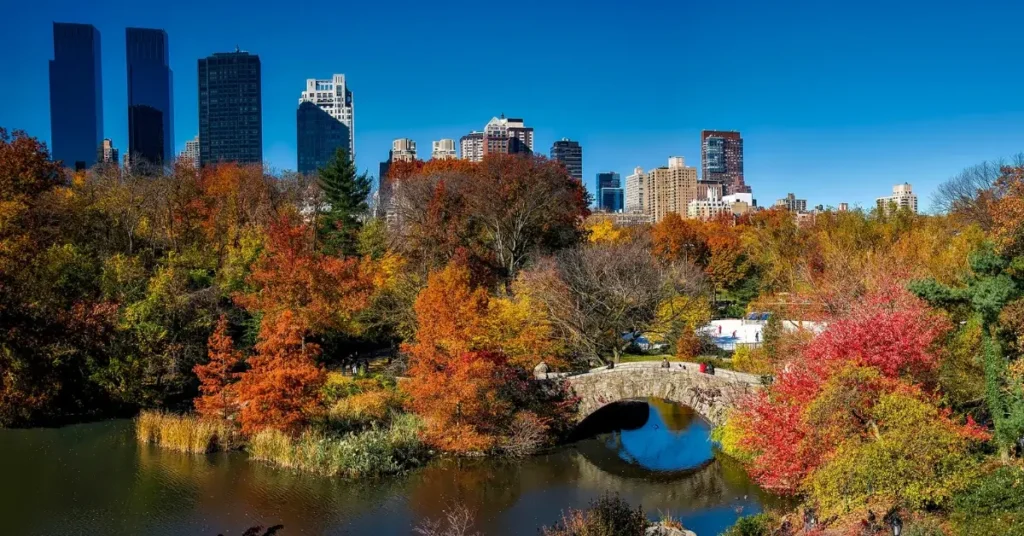
In addition to its role in wildlife conservation, Central Park also plays a significant part in maintaining the sustainability of New York City. With more than 18,000 trees and 843 acres of green space, the park offers a much-needed reprieve from the urban heat island effect. This natural cooling system helps to counteract the higher temperatures experienced in densely populated urban areas, making the city more comfortable and reducing energy consumption.
Trees in Central Park also contribute to cleaner air by capturing air pollutants and filtering rainwater, which reduces the number of toxins flowing into nearby water bodies. This benefit, along with the park’s ongoing sustainability initiatives, highlights Central Park’s indispensable role in fostering a healthier and more environmentally-friendly city.
FAQ – Central Park New York Facts
What are 3 facts about Central Park?
Central Park New York Facts not only highlight its vast size of 843 acres but also emphasize its historical significance as the first landscaped public park in the United States. This is one of the most fascinating Central Park New York Facts, showing the park’s role in urban planning history. Moreover, Central Park is home to over 25,000 trees and several lakes, offering a natural retreat in the heart of New York City. Another intriguing aspect of Central Park New York Facts is its diverse wildlife, ranging from birds to small mammals, which thrive in this urban oasis.
Further Central Park New York Facts reveal that the park has numerous attractions, including the famous Bethesda Terrace, the Central Park Zoo, and the iconic Bow Bridge. These landmarks are integral to Central Park New York Facts, drawing millions of visitors annually. The park’s design, a masterpiece by Frederick Law Olmsted and Calvert Vaux, is another critical point in Central Park New York Facts, showcasing a perfect blend of natural and landscaped elements. Lastly, Central Park New York Facts include its cultural significance, having been featured in countless films, books, and artworks, thus cementing its status as an iconic symbol of New York City.
Why is Central Park NY famous?
Central Park NY is famous for being a groundbreaking urban park, one of the key Central Park New York Facts. It’s renowned for its lush landscapes and cultural significance, another highlight among Central Park New York Facts. This iconic park offers a peaceful retreat from the bustling city, with its vast green spaces, scenic views, and rich history attracting millions of visitors annually.
How big is Central Park in NYC?
Central Park in NYC spans an impressive 843 acres, a standout among Central Park New York Facts. This vast size makes it one of the largest urban parks in the United States, another notable point in Central Park New York Facts. It stretches from 59th to 110th Street, providing a massive green space in the heart of Manhattan.
What are your favorite Central Park New York facts? Let us know in the comments!

